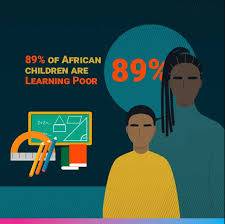**Education Business Plan 2030 for Eastern and Southern Africa: A Vision for Transformative Learning**
The Eastern and Southern African region faces significant challenges in providing quality education for its growing population. However, with the launch of the **Education Business Plan 2030**, a comprehensive framework has been introduced to address these challenges and create a transformative path for education in the region. This ambitious plan envisions equitable access to education, enhanced learning outcomes, and strengthened education systems to meet the demands of a rapidly changing world.
### **The Need for the Education Business Plan 2030**
Eastern and Southern Africa face unique educational challenges:
- **Access Disparities**: Millions of children are out of school, with rural areas and marginalized communities being the hardest hit.
- **Quality of Education**: Poor infrastructure, inadequate teacher training, and outdated curricula undermine learning outcomes.
- **Youth Unemployment**: A mismatch between education systems and market needs leaves many youths without the skills required for employment.
Recognizing these challenges, the Education Business Plan 2030 was developed to align regional education priorities with the United Nations Sustainable Development Goal 4 (SDG 4), which focuses on inclusive and equitable quality education and lifelong learning opportunities for all.
### **Key Pillars of the Education Business Plan 2030**
The plan is built around five core pillars that address access, quality, equity, and sustainability:
1. **Universal Access to Education**
The plan aims to ensure every child in Eastern and Southern Africa has access to education by 2030.
- **Early Childhood Development**: Expanding preschool education to provide a strong foundation for young learners.
- **Compulsory Primary and Secondary Education**: Governments are urged to adopt policies that make schooling mandatory and free for all children.
- **Bridging the Digital Divide**: Introducing digital learning tools and infrastructure to connect rural and underserved communities.
2. **Enhancing Learning Outcomes**
Improving the quality of education is critical to the success of the plan.
- **Teacher Training**: Investments will be made in professional development programs to equip teachers with modern pedagogical skills.
- **Curriculum Modernization**: Aligning curricula with 21st-century skills, including critical thinking, digital literacy, and STEM (Science, Technology, Engineering, and Mathematics) education.
- **Assessments and Accountability**: Strengthening assessment systems to monitor progress and ensure accountability.
3. **Promoting Equity and Inclusion**
The plan prioritizes marginalized groups to ensure no one is left behind.
- **Girls' Education**: Tackling barriers such as child marriage, poverty, and cultural norms to improve girls’ enrollment and retention rates.
- **Support for Vulnerable Learners**: Providing resources for children with disabilities, refugees, and those affected by conflict.
- **Language Policies**: Promoting bilingual education to address linguistic diversity and enhance comprehension.
4. **Technical and Vocational Education and Training (TVET)**
Recognizing the importance of aligning education with market demands, the plan emphasizes TVET as a pathway to employment.
- **Skill Development**: Focusing on practical skills that prepare students for jobs in agriculture, technology, and manufacturing.
- **Public-Private Partnerships**: Engaging the private sector to create internship and apprenticeship opportunities.
- **Entrepreneurship Training**: Encouraging innovation and self-employment among youths.
5. **Financing and Governance**
To achieve these ambitious goals, sustainable financing and good governance are essential.
- **Increased Education Budgets**: Governments are encouraged to allocate at least 20% of national budgets to education.
- **International Support**: Partnering with global organizations such as UNICEF, UNESCO, and the World Bank to secure funding and technical expertise.
- **Transparency and Accountability**: Establishing robust systems to monitor spending and ensure resources are utilized effectively.
### **Challenges and Opportunities**
While the Education Business Plan 2030 is ambitious, its implementation faces several challenges:
- **Funding Gaps**: Many countries in the region struggle with limited budgets and competing priorities.
- **Infrastructure Deficits**: Schools lack basic facilities such as classrooms, electricity, and sanitation.
- **Teacher Shortages**: Recruiting and retaining qualified teachers remain significant hurdles.
However, the plan also presents enormous opportunities:
- **Youth Demographic Dividend**: With a young population, investing in education can drive economic growth and innovation.
- **Digital Transformation**: Leveraging technology can accelerate access to quality education and bridge geographical gaps.
- **Regional Collaboration**: Countries can share resources and expertise to address common challenges.
### **Examples of Progress**
Some countries in Eastern and Southern Africa have already begun implementing initiatives aligned with the Education Business Plan 2030:
- **Kenya**: The Competency-Based Curriculum (CBC) is being rolled out to enhance skills-based learning.
- **South Africa**: Investments in TVET institutions aim to reduce youth unemployment.
- **Uganda**: Efforts to provide free primary education have significantly increased enrollment rates.
These examples demonstrate that progress is achievable with strong political will and strategic partnerships.
### **The Role of Stakeholders**
Achieving the goals of the Education Business Plan 2030 requires collaboration among various stakeholders:
- **Governments**: Must prioritize education in national agendas and allocate sufficient resources.
- **Private Sector**: Can provide funding, internships, and technological solutions to support education.
- **Communities**: Play a crucial role in advocating for education and supporting local schools.
- **International Partners**: Can offer technical and financial assistance to bridge resource gaps.
### **Conclusion**
The Education Business Plan 2030 for Eastern and Southern Africa represents a transformative vision for education in the region. By addressing critical issues such as access, quality, equity, and employability, the plan aims to equip learners with the skills and knowledge needed to thrive in a rapidly changing world.
While challenges remain, the commitment of governments, communities, and international partners offers hope for a brighter future. With sustained effort and collaboration, the Education Business Plan 2030 could become a blueprint for educational success, unlocking the potential of millions of learners across the region.


